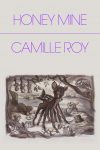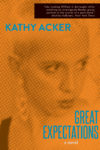
[Two Dollar Radio; 2020]
Billy-Ray Belcourt’s A History of My Brief Body was a painful read. The book promises to be about joy, and yet — it’s so much about grief and sadness. The book challenged me to confront my own underbelly of sadness. Undeniably, my own existential sadness clouded my empathetic reading, as I sank into the pages, as a “me” who is accustomed to accepting my own invalidating song. I’m a queer white girl with two beady gray-blue eyes. I started to identify strongly with the sad boy politics. I’d like to read the chapter where the NDN meets my soul. And yet I can’t find that chapter and I can’t write it either because I don’t exactly fit or belong anywhere in Belcourt’s landscape. Of course, who says I should? Nevertheless, I find I’d like to be an actor in the drama, but I’m subject to the role of reader, so I fall asleep to this song, and I wake to the same blank in a numbed body-soul. Now I just wish someone like Belcourt, Belcourt even, and I had gone to grad school together — that the stars had then converged — way back forever ago if I could travel back into the past and rewrite the present moment, while I wait for a word regarding what the future potentially holds. Belcourt is a kind of kindred soul. My queer radar was first awakened in graduate school, and it was there I learned to theorize the queer kiss I had yet to know, and I ticked a lot of queers off, but Belcourt shows it’s okay to do both. Perhaps you can see where this goes. From the start, I read into the sentences of the book about the “parasitic reader” Belcourt describes; surely that is me. I can’t feel or hear the joy, though I find no shame in sadness. I find the “pursuit of happiness” to be a myth; I celebrate living with a bit of sadness. Even as the book encouraged the awakening of that sadness in me, it challenged me to count my highs each day, to listen more closely to the music in my ears, to explore where and what joy is, and to question how often I do find it or simply choose it. To carve out space for joy in a heaving heart —
Extending the personal and the political, the book holds so much. From a native queer experience, Belcourt extends what it means to live in a state, to surpass the body’s defined frame, and to practice emoting as transcendence. Belcourt bravely characterizes the lives of others, including close family members, lovers, random partners, and service workers, as well as the work of highly praised writers, philosophers, and scholars. In a way, prestige or notoriety is dissolved, and we get to know a heart that holds an expanse — multiple and diverse loves in all their brokenness, through enacting violations, even in suicidal ideation. Belcourt opens with a preface, “A Letter to Nôhkom,” in which he writes, “This isn’t a book about you, nôhkom. A book about you, a book in which you appear uncomplicatedly in a world of your own making, is an anti-nation undertaking. Canada is in the way of that book.” As Belcourt continues to describe his love for Nôhkom, they seem to have somehow grown apart, but Belcourt never tells us how or what he means. With this opening section directed to a maternal, if grandmotherly, figure, I couldn’t help thinking about how the work sits next to recent publications by other writers about mothers, like Kiese Laymon’s Heavy: An American Memoir and the recent release of the anthology, What My Mother and I Don’t Talk About: Fifteen Writers Break the Silence, edited by Michele Filgate. In a recent creative writing workshop, poet Safia Jama also introduced the missive as a letter form to someone unavailable or absent. She chose the word “missive” particularly to describe such a letter compared to the broad category of epistolary writing. To me, the word “missive” captures the force driving the work and the intensity of longing that is ruthless and obstinate. Belcourt’s A History of My Brief Body is like a missive, one of those letters to the world who never wrote a kind picture of NDNs or even wrote to them as subjects. Belcourt reclaims their subjectivity and glories in his own authorial position by writing to nations, to NDNs, to Nôhkom, to Canada, and to the Americas. In direct address, Belcourt declares, “Under what furtive conditions do they [an oppressed group] enact care against the embargo on care that is Canada?”Concerned with the “enactments of care,” Belcourt justifiably grounds his work in a need for love and care. He even insists on an artistic practice that grapples with “the museum of political depression.” He writes, “books of the sort I want to write are banned, for they are against the world that birthed the writer.” Belcourt’s art is a liberatory and rebellious act: “Quickly I learned to walk upside down on the ceiling of the museum, which is an artistic practice of sorts.” The wedding of wider socio-cultural criticism to an individually stylized philosophy of art is lovely. I most enjoy how Belcourt challenges average readers to overturn their ideas and even aesthetics. We start to see reality twisted or adjacent by looking through his gaze and questioning the ground of our own refracted view. I appreciate that, as an artist, writer, and critic myself, hungry for philosophical stimulation and emotional intelligence, partial to art-making that exhibits the self, wishing to think ever more deeply as well about the power of exhibitionism, whether in galleries, museums, or elsewhere.
Admittedly, I was drawn to Belcourt’s work because it was sold to me “for readers” of Maggie Nelson and the “emerging” tradition of auto-theory. I identify with Belcourt as a writer, scholar, and theorist with many broader investments in art as well. Belcourt similarly is unwilling to bend to any single genre’s dictations, yet he takes many cues from a long tradition of critical theory and the philosophy of art and literature. As Belcourt shares in the author’s note, “What’s more, I marshal the forces of poetry and theory to weave not a linear story, which ‘memoir’ typically denotes, but rather a series of stories and analytical scenes into a composite that exceeds the boundaries of my individual life.” How the work bleeds beyond the self and oozes into everyday life may draw attention from readers of memoir and auto-theory, yet the book feels like it isn’t for anyone but the author himself. All the while we are reading, it’s like we are overhearing something so intimate. There’s a large bit of the work that feels like an ars poetica. Why do we read? Why does he write? To resist, to reclaim joy, as Belcourt declares, “Joy is art is an ethics of resistance.” But what is joy and what is sadness? Why joy, in particular, and not happiness? Is the overwhelming feeling sadness or sorrow or grief or depression? There seems to be a slippage of words for a sad song, and yet happiness is never equated with joy.
Notably, Belcourt centers his life-work within the realm of poetry, so the poet’s soul is couched in the work’s hybridity. I am also partial to claiming the origin of such genre complexity in poetry. Poetry is a brave space where readers aren’t generally given distinctions of fact or fiction, re-constructed story or persona; a poet’s work is often assumedly based in true-to-life experience while tactfully reminding readers we are ever free to leap into metaphor. Nonfiction, autobiography, even memoir may be less fluid, not as welcoming to a contactless trace; there is a contract with the reader of nonfiction, so there must be a trace to the author’s own self. Autobiography especially tracks the arc of an author’s life-story, often containing memorable pieces from childhood into adulthood. Belcourt’s book is not quite autobiography, if akin to the biomythography of Audre Lorde or the poet’s novel of Eileen Myles — a young queer NDN’s life-narrative which promises to queer the heteronormative presumption of a narrative arc.
Belcourt appeals to queer theorists like José Esteban Muñoz and Jack Halberstam, so the book stakes a claim in queer futurity. As Belcourt nods to both theorists, he dreams of a queer utopia, even a “red utopia,” but the subtext also suggests a queer art of failure, where failure must be reassessed, where the product requires us to rethink how we even measure a meaningful, happily successful life. It’s hard for me to know. We are reminded of Muñoz’s Cruising Utopia: The Then and There of Queer Futurity countless times from beginning to end; meanwhile, I could find only one footnote in the book citing Lee Edelman’s No Future: Queer Theory and the Death Drive. I read Belcourt’s title essay-chapter, “A History of My Brief Body” with anticipation, hoping to find the answer that would unlock the key, and I was entirely overcome by the feeling of loneliness and self-loathing. This too is the one place in the book where we meet Edelman. I kept asking myself, then asking the text: Where is the joy? Is the joy in queer love or self-love or elsewhere? Belcourt writes, “Sometimes when I fuck, I fuck not in the name of futurity but as a symptom of a romance with the negative, a romance with my own injurability. Perhaps there is something queer to be said of the act of running around without a skin.” In such depths of vulnerability, Belcourt turns to theory, interrogating such a perspective, concerned with the focus on the negative; thus, theory allows Belcourt to dissect experience and hold each thought. The knowing for Belcourt is a felt-sense; he imbues each citation with tenderness: “Lee Edelman: ‘The queerness of which I speak would deliberately sever us from ourselves.’” Belcourt’s citation practice demonstrates a rare breed of emotional intelligence. Of course, the question remains whether the book presents a picture of Muñoz’s queer futurity or is itself akin to Halberstam’s queer art of failure.
The naming of Halberstam alone was triggering for me. The last time I invoked Halberstam, I had opened up In a Queer Time and Place: Transgender Bodies, Subcultural Lives, and I was lectured enough to believe I had no clue, that I couldn’t know. In that moment, apparently I passed, I passed as straight and cis in a manner that was no flattery to me. My invisibility, as queer, was not a privilege. Invisibility meant I was dealt more blame, and I felt more guilt and shame, even as I was trying to know and to be what I found so truly lovely just for myself. And that moment of invalidation continued to provoke me from the outside-in, inside-out, unfortunately provoked by words in passing from both allies and queers, before I apparently no longer passed. Unmasking is painful. The presumption that I do not mask myself is an offense. I am still learning to not feel their words. In fact, to me, queer has always been gender-queer, gender-noncomforming, gender-fluid. Be gentle with them/him/her, you may say. It’s hard. I can’t always. I can’t ever just rest. Now. Anymore. The feeling lingers on what I never could have: to hold, to feel safe.
In the book, joy is in contest with grief within the soul. Joy seems central to the will to live, so it also becomes politically motivated. As Belcourt claims, joy is “a constitutive part of the emotional rhetoric.” Belcourt further links joy with hope for a future: “This means that joy is somewhat of an impossible desire when our sorrow is multiplied as long as daily life continues unimpeded.” But why must joy center? What is it that gives and carries on life: joy or love or care? Overcome with grief, Belcourt notes, “I’m up against decades and perhaps centuries of a literary history that extracted from our declarations of pain evidence of our inability to locate joy at the center of our desire to exist. With you, I can rally against this parasitic way of reading, this time-worn liberal sensibility.” Maybe I do not see why joy must be at the center. I always live a bit in sadness. Belcourt suggests how we have pathologized sadness, yet at the same time we shame self-serving pleasure. The grief in the self then may at times originate from a place of false guilt. Melancholia isn’t so bad because a lack of love for the self is worth investigation. Indeed, the self is worthy of love. As Belcourt notes, joy fuels the soul to keep going.
If perceptions of love imbue a social climate, love of self and neighbor positively and negatively affect the way we enact care. Care is something we give ourselves and also others. Must self-care always be the work of moving from grief further into joy? Isn’t care sometimes just affirming the pain is there? But then what? Maybe my expectation of the felt-sense — what joy is, where it is, how long it lasts — is a bit more complicated than it needs to be. Maybe I have been projecting the “pursuit of happiness” onto joy, so the joy slips away from me; it never seems to stay with me but always lingers around the corner somewhere. Belcourt explores how practicing joy is like paying attention everyday to breathing. Belcourt shares, “Joy by and for the racialized is what we can consider the practice of breathing in what theorist Christina Sharpe calls ‘breathtaking spaces’ shaped by oppressive forces of all kinds.” Similarly, if we return to the origins of the concept of self-care within the legendary work of black feminist Audre Lorde, self-branded “black, mother, warrior, poet,” self-care is “self-preservation.” Care is affirming the movements of Black Lives Matter and #icantbreathe. Affirmation is one piece, a step, a validation, situated against and apart from a history of deep-rooted oppressive invalidation. Belcourt cries for more — beckoning us to step back and step forward — searching the inventory of philosophers and poets alike to cope, just to cope, to exist in time just like anyone else.
In a world where there seems to be no hope, Belcourt takes comfort in poetry and what poetry alone is: wild and powerful and free. Belcourt writes, “What I can do is love as though it will rupture . . . Herein lies my poetic truth.” Referring to Bhanu Kapil’s Ban en Banlieue, Belcourt claims for himself the craft of poetry through pain: “when my nervous system hurts, so does the sentence, because that’s all we have: each other. The sentence and I. We cope.” Belcourt also takes cues from Roland Barthes, so poetry is birthed from a feeling of being “overrun with ideas . . . jammed in the aesthetic realm of fragmentation.” Thus, Belcourt’s poetics of care calls for a reckoning. Belcourt commands every critic, scholar, and theorist of the modern and postmodern, you and me, my post-apocalyptic contemporaries, to confront the political forcefulness of our words. He instructs us to confront the rhetoric of the modern, the cancellation of the “pre-modern,” as if our ideas and states are new, as if we get to laugh about days of old, as if our ancestors do not exist to roll over in their graves. The treachery of the past may be ours to uncover as well as ours to bury so that we don’t lose a human value but reclaim our kindred-spirit togetherness instead. Queers did not only exist ever since we claimed our stake in the politics of visibility. We need to tread the waters more carefully because we all can spill over into narcissism, because this is not our land, because all queers may unite in gratitude to our beloved queer NDNs for greater understanding of two-spiritedness. I am preaching to myself as well. As Belcourt says, “Poetry is the act of: ‘hearing beyond what we are able to hear.’” I have sunk into the grief that I struggle to truly hear his artful reckoning with joy. I sit with a desire to return to the metrics of language and poetry, even as I am met with a lack.
Reading A History of My Brief Body, I was confronted with the limits of prose. I could relate to the contortions of the body, but I felt no solace. I couldn’t find where to breathe. I do want to know the joy, but I don’t think I can find it in the pages of essay after essay, let alone in a book where I kept finding myself met with my own tendencies towards invalidation. It’s true I don’t always understand Belcourt. Even as a lover of theory myself, his words are so eloquent and abstract, and I am hyper-sensitive. At times, lack of a tangible ground leaves me before an open door, vulnerable to misreading. Meanwhile, I often could not find an entry point except through theory.
How can I participate in the enactments of care until I know how to claim joy for myself? Maybe this is where I start the chapter where the NDN meets my soul. Because where I come from, you and I were not allowed to just be and maybe also love a two-spirit ritual. My body is forever witness to misery. And my body cannot hold it all. But we do have poetry, metaphor, and hyperbole. Metaphor has the power to trigger and dislodge. And perhaps the poetic voices in me must again remind the reader in me: we do not mean for you dear reader to take us ever literally. Hyperbole is exaggerated speech, we live in magnetized times, and so my body sometimes feels electrified. There’s a current running through me that will always circle around, trying to point north, and still end up staring straight back into Lara Mimosa Montes’ “dead star.”
Words alone cannot carry in all their fullness the sense of my own grief and dance through life. Because I am sad, I am lonely, I am not content. Overturn with me the pages of this book. Let us grapple together with Roland Barthes’ Mourning Diary. As Belcourt describes, “I, in my twenties, feel a lot like Barthes in his sixties, grief-stricken, without the nucleus of his affective life, his mother. In pursuit not of understanding but of misunderstanding, of a ‘sense of life,’ which is not ‘a life’ because ‘a life’ is too unmusical.” Give me cadence, give me music, give me gesture, give me touch because I am left wondering what it is about the voices singing to me that lifts. Perhaps the musicality of language is where a poet may most find joy that transcends time, and yet I can hold so much grief and joy only for the moment of a song.
Now I have eyes to see why I, in fact, could not sink in. Retrace Belcourt’s title essay-chapter, “A History of My Brief Body” because it is here we meet the writer wading in deeply vulnerable waters, where we read about the tortured youth: adolescence — the liminal space of self-formation and self-recognition that queers must often renegotiate. Belcourt writes, “I was a haunted teenager, so much so that every photo of me also featured an apparition of sorts — an unseen and unseeable force-presence that, like a parasite, flourished in the wasteland of me.” Here too, Belcourt was haunted, haunted by the past: “The past came with me to Edmonton. It’s like a layer of dust on everything, so granular it encases me.”
When Belcourt speaks of struggles in academia, the poetic voice turns up the volume to be heard: “YOU’RE SPEAKING TO A MANNEQUIN, I wanted to shout to everyone within earshot. I was arrested . . . I see it everywhere . . . the aftereffects of surviving a struggle against oneself, against an identity . . . squished inside. I didn’t know what to do with my agony, so I did what most do with the at once unknown and menacing: I waged a war on it, on myself.” In these words, the poetic voice suggests a time akin to what Julia Kristeva describes as abjection, or even self-abjection. Similar to my past-self reading Alison Bechdel’s graphic memoir Are You My Mother?: A Comic Drama, Belcourt turns round and round within “the loneliness of the closet.” In a manner of re-framing the past, psychoanalysis may help a person heal from difficult memories. The process however often involves a painful retracing of steps, so it makes total sense as Belcourt writes, “I have found myself a number of times driving in the direction of the old apartment in which I spent many weekends with unlovable men out of neither nostalgia nor habit but a yearning for revenge.”
We reach the ars poetica when Belcourt brands himself as poet-critic, “pop psychoanalyst.” He announces for all, “‘Loneliness is a kind of dysphoria with the world’ is a refrain that repeats in my body of writing. It’s a hunch of mine that no one can apologize for or administer a cure for the racialized and sexualized condition of existential ennui.” Thus, Belcourt turns away from a fixation upon any other to love or be loved. A kind of transcendence trumps drive, as Belcourt reasons, “Utopia, of course, is an impossible love object. But as such, it is also an incitement to write, to run with pen in hand into the negative space of the future. Would I have it another way? What a danger to creativity, after all, to find oneself fitting neatly into the world!” This is where I land; I too may start to find rest, as I come to terms with the fact that I too will never fit comfortably in the make-believe world we both call home. Ars poetica merges with sonnet, an argument for the love of the intellectual home: “I live in the world of ideas because it’s the world of [he claims] my people.” My kind of people are those who carry on with believable doubt.
Belcourt, let us not just write books. Let us dance. In an exhibition where the paintings are hung upside down and the floor is a carpeted ceiling. I hope we dance. Even the downgrade is an uphill climb. But I’m ready and waiting to meet you there.
Kara Laurene Pernicano earned a MA in Literary and Cultural Studies with a Certificate in Women’s, Gender & Sexuality Studies from the University of Cincinnati. Currently, she is a MFA Candidate in Creative Writing and Literary Translation at Queens College, CUNY and an Adjunct Lecturer in English for CUNY. Artist and writer, she celebrates intersectional feminism, queer love, art and healing. Her creative work explores hybrid image-text practices.
This post may contain affiliate links.







